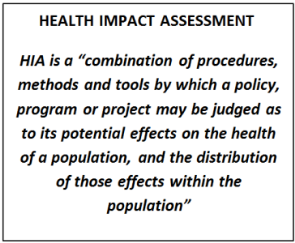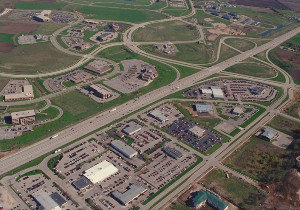For most of us, driving is a way of life. We drive to work, school, grocery stores, restaurants, theaters and even the gym. America’s massive investments in roads and highways have provided us with comfort, access and mobility. These conveniences however, have come at a price. Our auto-centric transportation system has spawned sedentary lifestyles that contribute to obesity and related illnesses, in addition to injuries and deaths from traffic crashes and respiratory problems from pollutants.
Where would you rather live?
On the other hand – communities that have invested in multiple transportation options have healthier citizens. A recent study by Canadian researchers showed that densely populated neighborhoods with more destinations within a short walking distance have lower rates of obesity and diabetes. “Driving is an incredibly sedentary activity. The amount of time we spend sitting during the day has a huge impact on our likelihood of gaining weight and developing diabetes,” said Gillian Booth, co-author of the study and an endocrinologist at St Michael’s University. Another study by researchers from UW-Madison found that if we in the Midwest took half of all our short trips (less than 5 miles) by bike, instead of by car – the region as a whole would save a staggering $8 billion annually in healthcare costs.
 The first step towards fostering healthy transportation choices is connecting smart land-uses to transportation. Zoning laws that allow the creation of dense developments that allow multiple land uses create vibrant communities that have some level of activity at all times of the day. Complementing these designs with sustainable transportation options – like bike and transit lanes, sidewalks and trails give people an incentive to drive less and travel in a healthier manner.
The first step towards fostering healthy transportation choices is connecting smart land-uses to transportation. Zoning laws that allow the creation of dense developments that allow multiple land uses create vibrant communities that have some level of activity at all times of the day. Complementing these designs with sustainable transportation options – like bike and transit lanes, sidewalks and trails give people an incentive to drive less and travel in a healthier manner.
Because of the intricate link between transportation and community health, policy makers and planners must factor in health costs into transportation funding decisions. We currently need better ways to quantify potential health benefits of transportation investments in order to more accurately understand their tradeoffs to the public. One way to do this is to carry out the health impact assessment of a project, in addition to regular cost-benefit analyses and environmental impact assessments.
Auto-centric communities that foster urban sprawl and create unappealing developments like strip-malls, gas-stations and large surface parking lots are on their way out. The resurgence of downtowns and urban cores across America is spawning a generation of healthier citizens – but change is slow. Here is how you can help build healthier communities.
- Explore taking public transit to work, instead of driving.
- Look up carpool or shared-ride options.
- Use technology to find walking and biking routes in your area.


